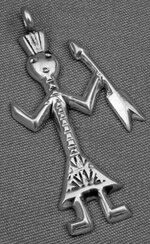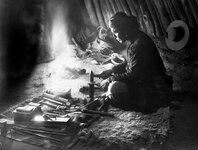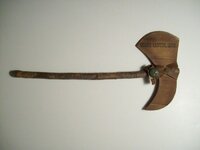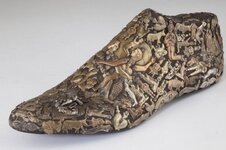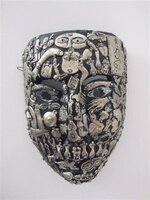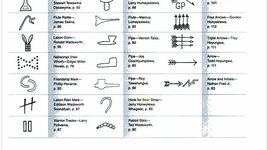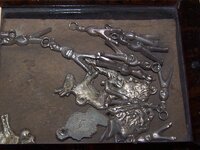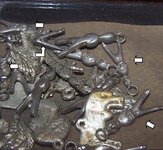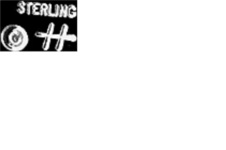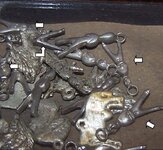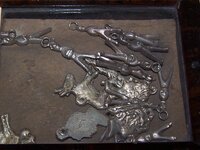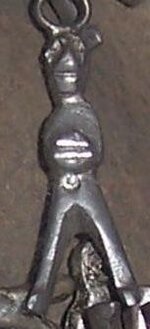foundatreasure
Jr. Member
- Jul 8, 2011
- 26
- 0
I stumbled on this site trying to research a treasure find. I hope it is OK to post for other than a find with a metal detector. I own one but haven't used it yet!
Anyway, found a sealed box(at a thrift store) that is marked "Navaho(sic) Trade Tokens\Sterling 1810's 3429B(a catalog number?)
I've never seen such things before & wondered if anyone new anything about them.
Looks like there is about 20 items in the box. It is sealed so I didn't think I should open it as it looks very old itself.
Appears there is a crude Bull, a Donkey, a Kneeling person, 2 heads that look like Native American person on a buffalo head nickel, 3 other (female?) heads that remind me of a liberty dime & about 12 stick people. The 12 stick people have similar hash marks on them like a number sign # but with only 1 vertical line. They are all a little different. On the non-stick people, didn't see any marks.
Any info is appreciated!
Anyway, found a sealed box(at a thrift store) that is marked "Navaho(sic) Trade Tokens\Sterling 1810's 3429B(a catalog number?)
I've never seen such things before & wondered if anyone new anything about them.
Looks like there is about 20 items in the box. It is sealed so I didn't think I should open it as it looks very old itself.
Appears there is a crude Bull, a Donkey, a Kneeling person, 2 heads that look like Native American person on a buffalo head nickel, 3 other (female?) heads that remind me of a liberty dime & about 12 stick people. The 12 stick people have similar hash marks on them like a number sign # but with only 1 vertical line. They are all a little different. On the non-stick people, didn't see any marks.
Any info is appreciated!


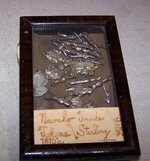
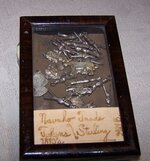

 The question that I have is did the Navajo actually make Milagros as well? How can you tell the difference? Would the Navajo make kneeling, praying Milagros?
The question that I have is did the Navajo actually make Milagros as well? How can you tell the difference? Would the Navajo make kneeling, praying Milagros?
 Ink analysis, paper analysis, shellac analysis...
Ink analysis, paper analysis, shellac analysis...